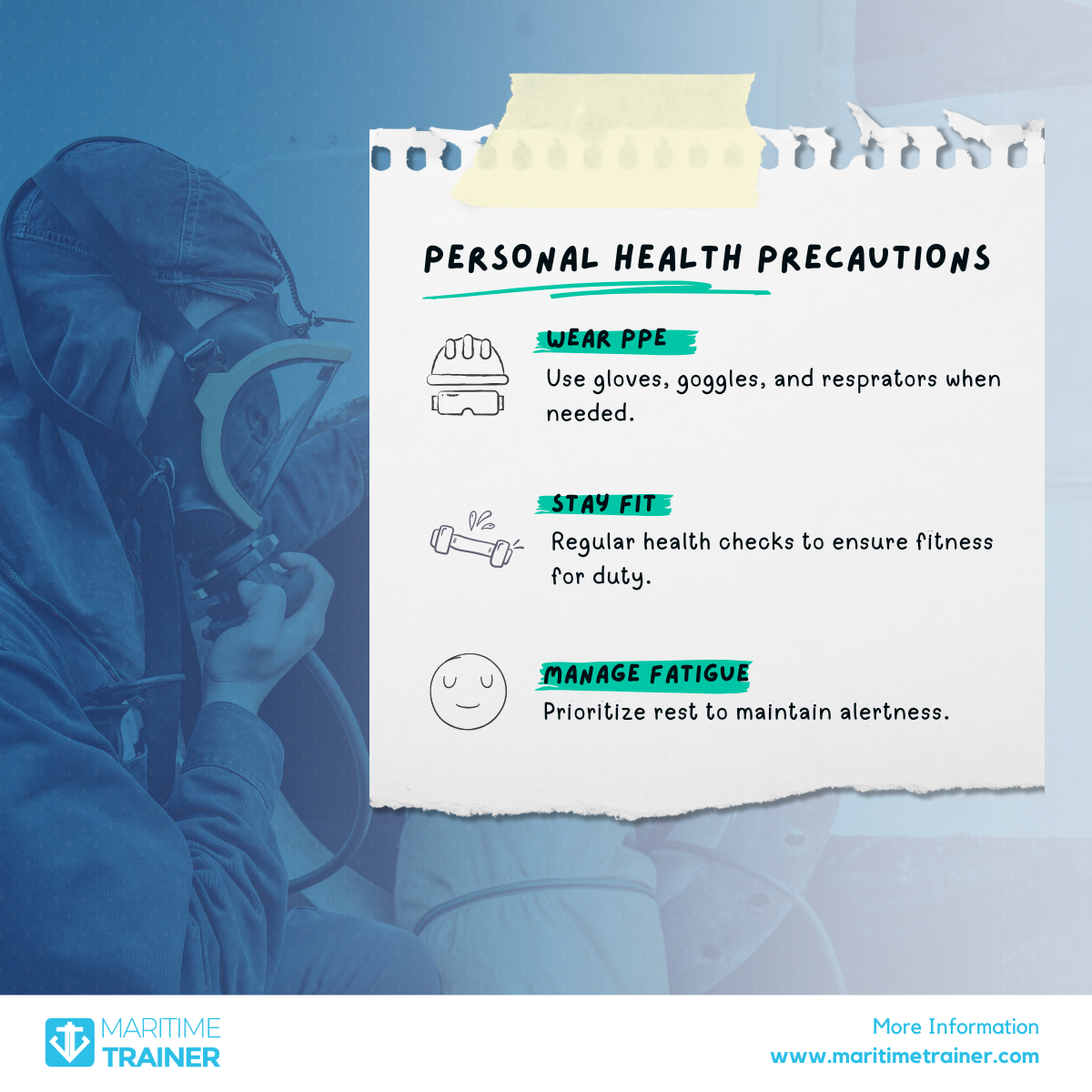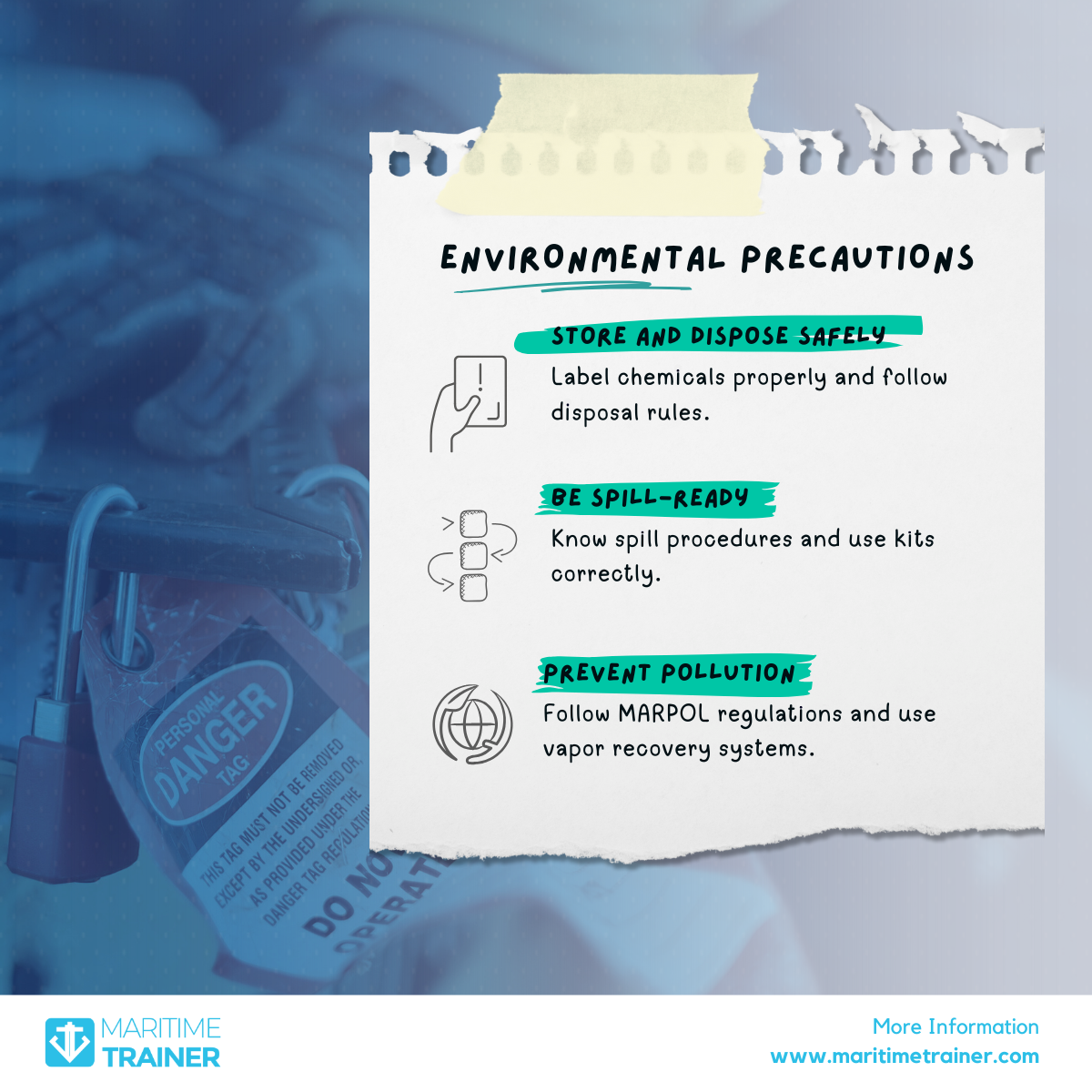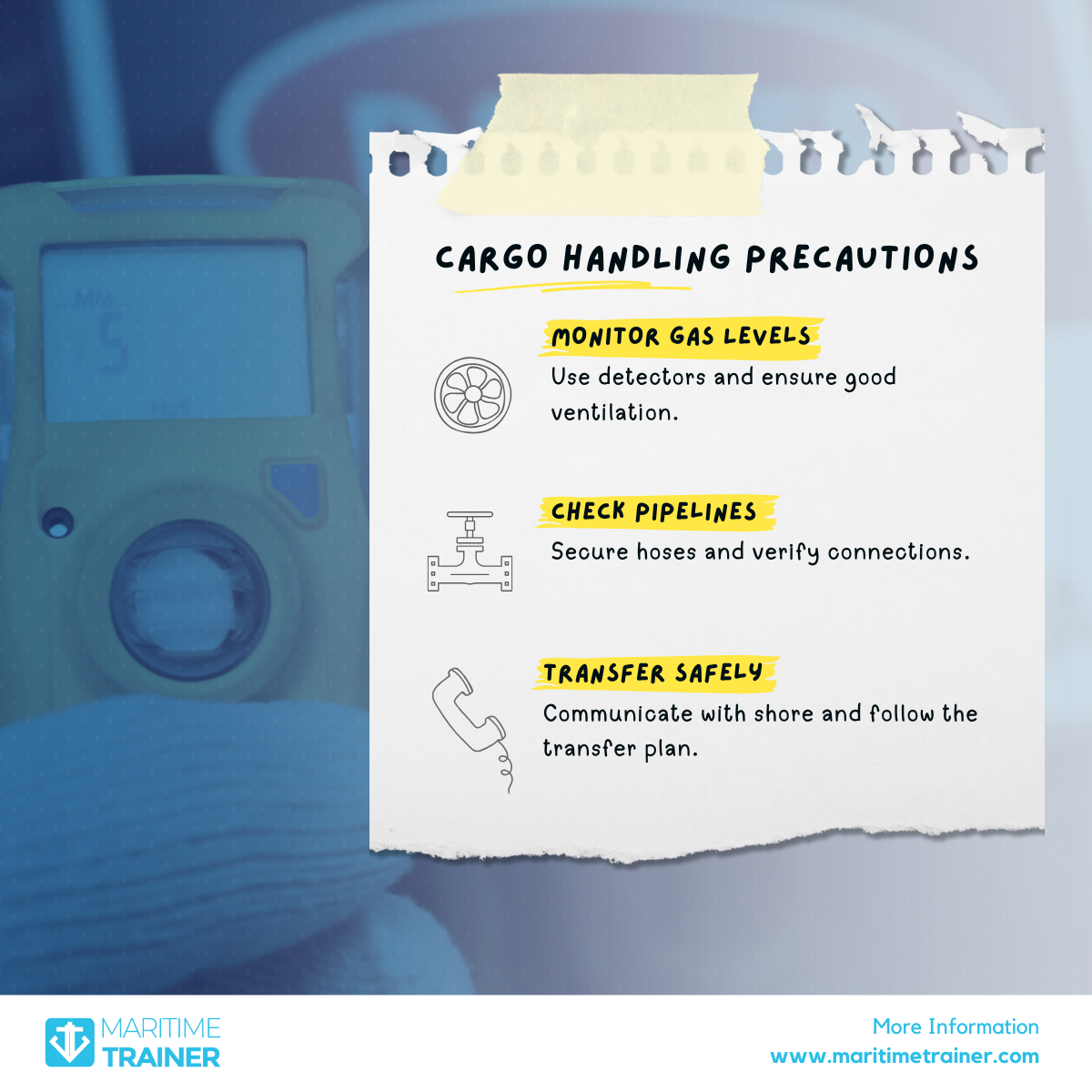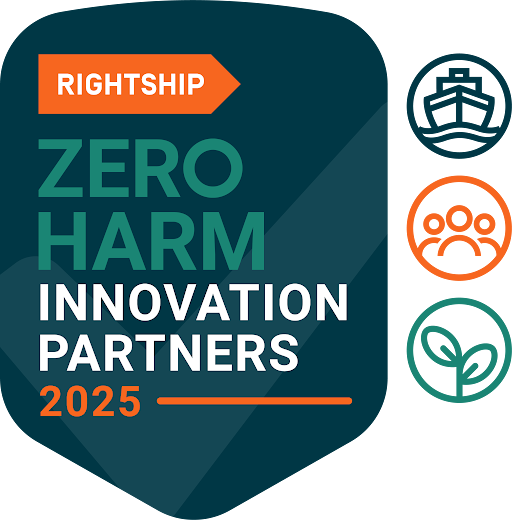Staying Safe and Green: Essential Health, Safety, and Environmental Tips for Gas Carriers
1. Introduction
In the maritime industry, the health and safety of crew members and the protection of the environment are paramount, especially when working with gas carriers. These vessels are specifically designed to transport liquefied gases such as liquefied natural gas (LNG) and liquefied petroleum gas (LPG), which are highly flammable and hazardous. The unique risks in handling such cargo make it crucial to adhere to stringent health, safety, and environmental precautions.
First and foremost, gas carriers present significant challenges because they transport pressurized and cryogenic gases, often at extremely low temperatures. Any breach of safety protocols can result in catastrophic consequences, such as fires, explosions, or toxic leaks. These incidents endanger crew members' lives and pose severe threats to marine environments, causing lasting damage.
Furthermore, crew members working on gas carriers face unique occupational health risks. If not correctly managed, long working hours, exposure to hazardous materials, and the physical demands of handling complex machinery can lead to fatigue and other health issues. For this reason, maintaining strict health protocols is critical for ensuring that crew members are fit for duty and capable of handling the demanding nature of their work.
From an environmental perspective, the importance of safeguarding marine ecosystems cannot be overstated. If not correctly managed, gas carriers can contribute to pollution through accidental spills, vapor releases, and improper waste disposal. Adhering to international regulations such as MARPOL (The International Convention for the Prevention of Pollution from Ships) is essential to prevent these hazards. The maritime industry must prioritize environmental responsibility to minimize its footprint and protect the oceans for future generations.
Overall, the transportation of liquefied gases requires a comprehensive approach to health, safety, and environmental management. Failure to implement and maintain these precautions can lead to dire consequences for the crew and the environment. This blog will cover the critical steps needed to ensure safe and responsible operations on gas carriers.
2. Health Precautions

Regular Health Checks
Maintaining optimal health is a critical requirement for every crew member on a gas carrier. Regular medical assessments ensure seafarers are physically fit and able to perform their duties effectively. These health checks help identify potential medical conditions that could compromise safety, such as high blood pressure, heart conditions, or respiratory issues, which are especially important when working in confined, high-risk environments.
Health checks also serve as a preventive measure. Early detection of health problems allows for timely interventions, ensuring crew members receive the necessary treatment before their condition worsens. By staying proactive with their health, seafarers can minimize the risk of medical emergencies occurring during voyages, where immediate access to healthcare may not always be available. Therefore, regular medical assessments are not just a regulatory requirement but a fundamental aspect of maintaining crew safety on gas carriers.
Fatigue Management
Fatigue is one of the leading contributors to accidents and operational failures at sea, particularly on gas carriers where alertness is crucial. Long working hours, night shifts, and demanding tasks can easily lead to exhaustion if not appropriately managed. Seafarers must prioritize rest to stay alert and focused during their shifts, as reduced mental and physical capabilities can lead to costly mistakes.
Fatigue management includes scheduled breaks, a balanced workload, and sufficient sleep. Ensuring crew members are well-rested helps maintain high concentration levels, particularly during critical operations such as cargo loading, transfer, and monitoring gas levels. By actively managing fatigue, the likelihood of human error, a common cause of accidents at sea, can be significantly reduced.
Personal Protective Equipment (PPE)
Using Personal Protective Equipment (PPE) is a non-negotiable aspect of ensuring safety on gas carriers. Liquified gases, which are often stored at extremely low temperatures or under high pressure, require that all crew members wear appropriate protective gear. Gloves, goggles, respirators, and full-body suits protect workers from potential exposure to hazardous materials.
For example, gloves and goggles provide essential protection when handling chemicals or working in close proximity to hazardous gases. Respirators are crucial in areas where there may be a risk of inhaling toxic fumes. Wearing the correct PPE helps reduce the risk of injury, chemical burns, or respiratory complications, which can have long-term health consequences.
Beyond the equipment, training on the proper use and maintenance of PPE is just as necessary. Crew members must know when and how to use protective gear, ensuring it functions effectively in real-life scenarios. Implementing a strong PPE culture onboard gas carriers not only safeguards individual health but also strengthens the overall safety standards of the operation.
3. Safety Precautions
Safety precautions on gas carriers are critical to protecting the crew and the vessel during operations. Given the unique risks of hazardous cargo, strict adherence to safety protocols is essential. Below are some of the most critical safety measures that should be observed to ensure smooth and safe operations on gas carriers.
Permit to Work (PTW) System
The Permit to Work (PTW) system is a formalized process used to manage and control high-risk, non-routine tasks on gas carriers. These tasks include maintenance work, inspections, and any activities deviating from the vessel’s day-to-day operations. The PTW system ensures that these tasks are assessed for risks, approved by responsible personnel, and carried out under strict supervision.

Adhering to PTW protocols is essential because non-routine tasks often involve higher risks, such as exposure to hazardous substances or operations in confined spaces. The PTW system helps identify potential dangers and provides clear instructions on mitigating them, such as requiring specific Personal Protective Equipment (PPE) or coordinating with other departments. By following these protocols, the crew can minimize the risk of accidents or exposure to dangerous conditions, ensuring the safety of both individuals and the vessel.
Hot Work Precautions
Hot work, such as welding or cutting, poses a significant fire hazard on gas carriers, especially near flammable areas or gas containment systems. Because liquefied gases are highly flammable, any spark or heat source can potentially trigger fires or explosions. For this reason, hot work should be strictly regulated and monitored.
Before any hot work begins, conducting a thorough risk assessment and ensuring that appropriate precautions are in place is crucial. This includes obtaining a hot work permit, isolating the work area from flammable substances, and ensuring that fire extinguishing equipment is readily available. Additionally, constant monitoring should be maintained during and after hot work activities to prevent any accidental ignition of gases. Taking these precautions helps protect the individual performing the hot work and the entire crew and vessel from potentially catastrophic incidents.
Emergency Preparedness
Emergency preparedness is one of the cornerstones of safety on gas carriers. Due to the hazardous nature of the cargo being transported, all crew members must be thoroughly trained in emergency procedures and familiar with the ship’s emergency systems. This includes knowing how to use firefighting equipment, operate gas detection systems, and respond to incidents such as gas leaks or fires.
Regular emergency drills are a vital part of this preparedness, as they provide the crew with the necessary practice to respond quickly and effectively in high-pressure situations. In addition to emergency response training, crew members should be familiar with evacuation procedures and know the location of safety equipment, such as life rafts and personal flotation devices. Being well-prepared for emergencies ensures that the crew can act swiftly to mitigate damage and protect lives in the event of an accident.
4. Environmental Precautions

The environmental impact of gas carriers is a critical concern in the maritime industry. Given the nature of the cargo, improper handling or accidental release of gases and chemicals can cause significant damage to marine ecosystems. To prevent such environmental hazards, strict precautions must be followed. Below are the key environmental measures that gas carriers should implement to minimize their ecological footprint.
Safe Storage and Disposal of Chemicals
Proper chemical storage and disposal are essential for preventing leaks, spills, and contamination. Every chemical substance on a gas carrier must be correctly labeled with details about its properties, risks, and handling instructions. This helps ensure the crew can safely manage these materials, particularly in high-risk areas such as the engine room or cargo handling sections.
In addition to labeling, storage areas should be designed to contain spills and prevent environmental contamination. This includes using secondary containment systems and regular inspections of storage facilities to detect any potential leaks or hazards. When it comes to disposal, all chemical waste must be handled in compliance with international regulations, ensuring that waste materials are appropriately segregated and disposed of at certified facilities. These measures play a crucial role in safeguarding marine environments from harmful substances.
Pollution Prevention
Pollution prevention is a top priority for the maritime industry, particularly gas carriers transporting volatile and hazardous materials. MARPOL (the International Convention for the Prevention of Pollution from Ships) is the primary regulatory framework governing pollution prevention. Compliance with MARPOL regulations is essential to minimize the release of harmful emissions, chemicals, and waste into the ocean.
One effective method for controlling gas carrier emissions is using vapor recovery systems. These systems capture and contain vapors released during cargo loading and unloading, preventing them from being vented into the atmosphere. By reducing the release of volatile organic compounds (VOCs), vapor recovery systems minimize air pollution and help protect the health of crew members and nearby port communities. Strict adherence to MARPOL and advanced pollution prevention technologies are vital for maintaining cleaner seas and air.
Spill Readiness
Even with the best precautions, spills can never be eliminated, making spill preparedness essential for environmental protection. Every gas carrier must have a well-documented spill response plan that details the procedures for managing leaks and spills. This plan should be regularly reviewed and updated to account for new risks or changes in operations.
Additionally, the ship must be equipped with spill kits designed to contain and clean up hazardous substances quickly and effectively. Crew members must be trained on properly using spill response equipment, and regular drills should be conducted to ensure readiness. By being well-prepared to handle spills, gas carriers can significantly reduce the environmental impact of accidental leaks, preventing long-term harm to marine ecosystems.
5. Cargo Handling Precautions
Due to the highly hazardous nature of liquefied gases, handling cargo on gas carriers requires the utmost care and precision. Any mishandling can result in severe consequences, such as leaks, fires, or even explosions. To ensure safe and efficient cargo handling, strict protocols must be followed at every stage of the process. Here are the key precautions that must be observed to guarantee safety during cargo operations on gas carriers.
Pipeline and Hose Checks
Before any cargo transfer begins, it is essential to thoroughly inspect all pipelines, hoses, and connections involved in the process. The integrity of these systems is critical to ensuring that no leaks or spills occur during the transfer of liquefied gases. Securing connections and regularly checking for signs of wear or damage is a proactive way to prevent potential incidents.

All hoses used in cargo transfer should be correctly rated for the pressure and temperature conditions they will be exposed to. Regular maintenance checks are vital to identifying any weaknesses in the transfer systems, such as loose connections or deteriorated hoses, which could compromise the safety of the operation. By performing these checks consistently, gas carriers can maintain the safety and integrity of their cargo handling systems.
Gas Level Monitoring
Monitoring gas levels during cargo transfer is another crucial safety precaution. Gas detectors should be deployed throughout the ship, especially in areas where gases are stored or transferred. These detectors help identify leaks or dangerous gas accumulations, providing early warning to the crew to take immediate action.
Safe Transfer Procedures
Cargo transfer on gas carriers is a complex process that requires close coordination with shore-based personnel. Before the transfer begins, a straightforward transfer plan must be established and communicated to all parties involved. This plan outlines the sequence of operations, safety measures, and emergency protocols, ensuring everyone understands their responsibilities.
Adhering to the transfer plan and maintaining constant communication with the shore team is vital for managing the transfer efficiently and safely. Monitoring pressure levels, temperature, and flow rates throughout the process helps mitigate risks. Additionally, contingency plans allow for a swift response in case of any deviations or emergencies during the transfer. By following these safe transfer procedures, gas carriers can minimize risks and ensure the smooth handling of hazardous cargo.
6. Final Recommendations

Ensuring safety on gas carriers is not only about following rules and protocols—it’s about fostering a culture of safety and responsibility at every level of the operation. By promoting a proactive mindset and continuous improvement, the maritime industry can significantly reduce the risks of transporting hazardous cargo. Here are the final recommendations to uphold the highest safety standards on gas carriers.
Promoting Safety Culture
A strong safety culture is the foundation of any successful maritime operation. Encouraging crew members to report unsafe practices and hazards is crucial in maintaining a safe working environment. When employees feel empowered to speak up without fear of reprisal, it creates a shared sense of responsibility for the well-being of the entire crew.
Regular safety meetings and training sessions reinforce this culture, ensuring everyone stays informed about the latest safety protocols and best practices. These gatherings provide an opportunity to review incidents, discuss improvements, and raise awareness about potential risks. A commitment to promoting a safety culture on gas carriers leads to more vigilant and proactive teams, ultimately reducing the likelihood of accidents.
Preventive Measures
Preventing accidents before they occur is the cornerstone of safety management for gas carriers. Rather than simply reacting to incidents, crews must take a proactive approach to identify and address risks. This begins with thorough risk assessments before, during, and after every operation. By anticipating potential hazards, teams can put preventive measures in place, such as using appropriate protective equipment, following strict safety protocols, and maintaining open lines of communication.
Accidents often result from overlooking small details or failing to prepare for unexpected challenges. By fostering a mindset emphasizing foresight and preparedness, gas carrier crews can prevent minor issues from escalating into major incidents. Emphasizing preventive measures helps maintain operational efficiency while safeguarding crew members' lives and protecting the environment.
Stay Updated with HSE Guidelines
The maritime industry is continuously evolving, and so are the health, safety, and environmental (HSE) guidelines that govern gas carrier operations. Ship operators and crew members must stay informed about the latest regulations and industry best practices. This includes regular updates from organizations like the International Maritime Organization (IMO) and compliance with international conventions like MARPOL and SOLAS (Safety of Life at Sea).
Continuous training and professional development are critical to updating crews on new HSE guidelines. By staying current with the latest regulatory changes, gas carriers can ensure they always operate at the highest safety and environmental responsibility standards. Regularly reviewing and adapting to new guidelines enhances operational safety and demonstrates a commitment to protecting the environment and ensuring the well-being of all crew members.
7. Conclusion
Transporting hazardous cargo on gas carriers demands the highest standards of health, safety, and environmental precautions. Throughout this blog, we’ve highlighted the essential practices that ensure the crew's protection, the vessel's, and the surrounding environment. Every step plays a critical role in minimizing risk, from regular health checks and fatigue management to strict adherence to safety protocols like the Permit to Work system and the use of Personal Protective Equipment (PPE).





